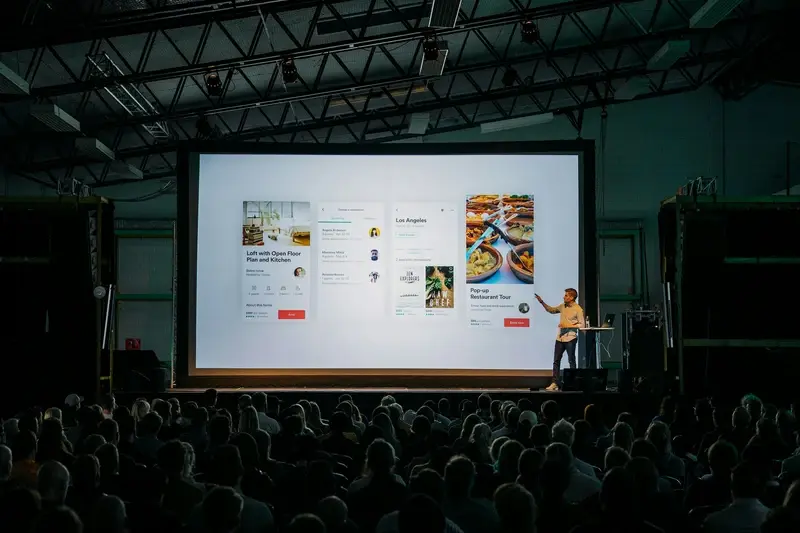When is the Right Time to Seek Funding for My App?
A dating app founder I know built what they thought was the perfect matching algorithm. Spent £50,000 of their own money, worked nights and weekends for eight months, and launched with zero users. They approached investors afterwards, expecting them to be impressed by the polished product. Instead, every investor asked the same question: "Where are your users?" The app had great tech but no proof anyone actually wanted it. That's when they realised they'd got their app funding timeline completely wrong.
Timing your funding request is probably one of the trickiest parts of building a mobile app business. Ask too early and you'll get rejected for not having enough to show. Wait too long and you might run out of money before you can prove your concept works. I've seen brilliant apps fail because founders waited until they were desperate, and I've seen mediocre ideas get funded because the timing was spot on.
The mobile app investment landscape has changed massively over the past few years. Investors are much more cautious now—they want to see real user traction, not just a pretty interface. But here's the thing: they also want to get in early enough to see meaningful returns. Finding that sweet spot between "too early" and "too late" can make or break your entire venture.
The best time to seek funding is when you can prove your app solves a real problem for real users, but before you've solved all your growth challenges
This guide will walk you through the different startup funding stages and help you identify exactly when your app is ready for investment. We'll cover everything from bootstrapping your MVP to preparing for Series A, plus the alternative routes that many successful app founders use. By the end, you'll know exactly where you stand and what you need to do next.
Understanding Your App's Funding Readiness
Right, let's get straight to the point here—before you even think about approaching investors, you need to honestly assess where your app stands. I've seen too many entrepreneurs rush into funding conversations when they're nowhere near ready, and it rarely ends well.
The biggest mistake? Thinking that a brilliant idea is enough. It isn't. Investors don't fund ideas; they fund businesses that show real potential for growth. Your app needs to demonstrate more than just functionality—it needs to prove there's genuine demand for what you're building.
Key Readiness Indicators
Here's what actually matters when evaluating your funding readiness. First, you need real users—not your mum and your mates testing it out. I'm talking about genuine strangers who've found your app, downloaded it, and continue using it regularly. Even if its just a few hundred active users, that's infinitely more valuable than thousands of one-time downloads.
Second, you need clear metrics that show growth potential. User retention rates, engagement levels, and if you're monetising, early revenue figures. These numbers tell the story investors want to hear.
- Active user base with measurable engagement
- Proven market demand through user feedback and behaviour
- Clear understanding of your unit economics
- Defined go-to-market strategy that's already showing results
- Team capable of executing the next growth phase
The harsh reality? If you can't tick most of these boxes, you're probably not ready for external funding yet. That doesn't mean your app isn't good—it just means you need to focus on building a stronger foundation first. Self-funding or bootstrapping might be your better option right now, and there's absolutely nothing wrong with that approach.
Early Stage Funding Options
When you're just starting out with your app idea, funding options can feel a bit overwhelming. I mean, there's so many different routes you can take—but not all of them make sense at the early stage. Let me break down what actually works when you're still figuring things out.
Bootstrapping is where most successful apps begin, and honestly? It's often the best approach early on. Using your own savings or revenue from other work gives you complete control over your app's direction. You're not answerable to investors who might push you towards quick returns rather than building something that really works. Plus, when you do eventually seek external funding, having some skin in the game shows investors you're serious about the project.
Friends and Family Funding
This is typically the next step up from bootstrapping. Friends and family rounds usually range from a few thousand to £50,000, depending on your network. The advantage? These people already believe in you personally, so they're more likely to back your vision even if the app isn't fully developed yet. But here's the thing—keep it professional. Draw up proper agreements and be crystal clear about expectations; mixing money with personal relationships can get messy quickly.
Government Grants and Competitions
Don't overlook these options. The UK has various grant schemes for tech startups, and many don't require you to give away equity. App competitions can also provide both funding and valuable exposure. Sure, the application process can be time-consuming, but free money is free money.
Keep detailed records of all early-stage funding, no matter how small. Future investors will want to see a clear funding history and how you've used previous investments to grow the business.
The key with early-stage funding is not to over-complicate things. Focus on getting enough money to build and test your core concept rather than trying to raise massive amounts before you've proven product-market fit.
Building a Minimum Viable Product First
Right, let's talk about MVPs—and no, that doesn't stand for Most Valuable Player in this context! A Minimum Viable Product is basically the simplest version of your app that still solves the core problem you set out to tackle. I can't stress enough how many founders I've worked with who wanted to build everything from day one. Big mistake.
Here's the thing about MVPs: they're not supposed to be pretty or feature-complete. They're supposed to prove that people actually want what you're building. I've seen too many apps burn through six-figure budgets trying to build the "perfect" product, only to discover users didn't want half the features they'd spent months developing.
When you're thinking about funding, having an MVP changes everything. Investors can see it, touch it, use it—and that's worth more than any pitch deck or business plan. But here's what catches most people out: your MVP needs to actually work properly. I mean, it can look basic, but it can't crash every five minutes or take forever to load.
What Makes a Good MVP?
Your MVP should focus on one core feature that solves your main problem. That's it. If you're building a food delivery app, don't worry about loyalty programs or social sharing yet—just make sure people can order food and it arrives. Everything else can wait.
The beauty of starting with an MVP is that it forces you to be disciplined about what really matters. Plus, when you do approach investors, you'll have real usage data to show them. For founders looking to build their MVP quickly and cost-effectively, no-code development platforms can be an excellent way to validate your concept without the upfront technical complexity.
Market Validation Before Investment
Right, let's talk about something that can save you thousands—and I mean thousands—of pounds. Market validation. It's basically proving that people actually want your app before you spend serious money building it. I've seen too many brilliant developers skip this step and end up with beautiful apps that nobody downloads.
Here's the thing though—validation doesn't mean asking your mates if they think your app idea is good. Your friends will lie to you! They'll nod politely and say "yeah, sounds great" because they don't want to hurt your feelings. What you need is real market data from people who don't know you from Adam.
Getting Real User Feedback
Start with landing pages. Create a simple webpage explaining your app idea and see if people sign up for updates. If you can't get 100 email addresses from strangers, that's a red flag. Run some Facebook or Google ads pointing to this page—it'll cost you maybe £50-100 but it's better than spending £15,000 on an app nobody wants.
Survey your target users too. But be clever about it—don't ask "would you use this app?" because everyone says yes. Ask "how much would you pay for this?" or "what apps do you currently use for this problem?" The answers will tell you everything you need to know about market demand.
The biggest mistake founders make is building what they think users want, rather than what users actually need
Once you've got solid validation data, investors become much more interested. They want to see proof that there's a market for your app, not just your passionate belief that there is. This validation becomes the foundation of your funding pitch and shows you've done your homework properly.
Pre-Seed and Seed Funding Timing
Right, so you've got your MVP sorted and some decent market validation under your belt. The question now is when exactly should you pull the trigger on pre-seed or seed funding? I mean, timing this wrong can be bloody expensive—both in terms of equity you give away and opportunities you might miss.
Pre-seed funding typically happens when you've got a working prototype and some early user feedback, but you're not necessarily generating revenue yet. You know what? This is where most app founders get antsy. They see their runway shrinking and panic. But here's the thing—raising too early means you're selling your company cheap; too late and you might run out of cash before you can prove your worth.
The sweet spot for pre-seed is usually when you can demonstrate three key things: your app solves a real problem (not just something you think is cool), you've got some initial user traction—even if its small numbers, and you have a clear plan for how additional funding will accelerate growth. I've seen founders raise £50k to £250k at this stage, which should give you 12-18 months of runway.
Seed funding comes next, typically when you've got some revenue coming in or at least strong user engagement metrics that suggest monetisation is around the corner. By this point, you should have refined your user acquisition strategy and have a clearer picture of your unit economics. The numbers don't need to be perfect, but they should show a path to profitability.
Actually, one thing I always tell clients is that fundraising takes longer than you think. Start conversations at least 6 months before you actually need the money—trust me on this one.
Series A and Growth Stage Funding
Right, so you've made it through the early stages—you've got a solid app, proven market fit, and decent user numbers. Now you're looking at Series A funding. This is where things get properly serious, and honestly, it's a whole different game from seed funding.
Series A investors aren't just buying into your idea anymore; they want to see real growth metrics. We're talking about monthly active users, revenue per user, churn rates—all the numbers that prove your app isn't just a nice-to-have but something people genuinely need. Most apps seeking Series A have at least 100,000 active users and clear revenue streams. It's not enough to say "we'll figure out monetisation later" at this stage.
Don't rush into Series A just because you can. Make sure you actually need the capital for growth—premature scaling has killed more apps than I care to count.
The funding amounts are much larger too. Series A rounds typically range from £2-15 million, which means you're giving up a significant chunk of your company. But here's the thing—at this stage, its about finding investors who bring more than just money. The best Series A investors have networks that can open doors to major partnerships, enterprise clients, or international markets.
When You're Ready for Growth Stage Funding
Growth stage funding comes later, usually Series B and beyond. By this point, your app should be generating substantial revenue and you're looking to expand into new markets or add major features. The key metrics investors want to see include:
- Strong unit economics (you make more from users than it costs to acquire them)
- Proven scalability across different user segments
- Clear path to profitability or market dominance
- Experienced management team
The timeline from Series A to growth funding varies massively. Some apps raise again within 18 months, others wait three years. It all depends on your growth trajectory and market conditions.
Alternative Funding Routes
Look, traditional VC funding isn't the only game in town—and honestly, it's not always the best option for every app. I've worked with clients who've found some really clever ways to fund their mobile projects without giving up huge chunks of equity or dealing with the pressure of institutional investors.
Revenue-based financing has become quite popular lately, especially for apps that already have some traction. Basically, you get funding in exchange for a percentage of your future revenue until the loan is repaid with interest. It's less risky than equity financing because you keep control of your company, but you need to have predictable income streams first.
Government Grants and Tax Incentives
Don't overlook government funding—there's actually loads of money available for tech startups, particularly if your app has any social impact or fits into priority sectors like healthcare, education, or sustainability. The application process can be a bit tedious, but the money doesn't need to be repaid and you don't give up equity. Win-win.
Strategic Partnerships and Corporate Venture
Sometimes the best funding comes from potential customers or industry partners. I've seen apps get funded by companies who want to integrate the technology into their own operations. It's not just about the money either—you get industry expertise, potential customers, and validation all in one package.
Crowdfunding through platforms like Kickstarter can work brilliantly for consumer apps, though you need a compelling story and decent marketing skills. And don't forget about app development contests and accelerators—the prize money might not be huge, but the mentorship and connections you make can be worth their weight in gold.
Common Funding Mistakes to Avoid
Right, let's talk about the mistakes I see app founders make when seeking investment—because honestly, some of these could have been avoided with just a bit more planning. The biggest one? Seeking funding too early. I can't tell you how many times I've seen entrepreneurs pitch their "idea" without any proof it actually works or that people want it. Investors aren't buying lottery tickets; they want to see traction, user feedback, and some indication you've solved a real problem.
Another classic mistake is not understanding what different types of investors actually want. Angel investors look for different things than VCs, and bootstrapping your way to profitability requires a completely different approach than seeking Series A funding. You wouldn't ask your local baker to fix your car, would you? Same principle applies here—match your funding stage with the right type of investor.
Valuation and Equity Errors
Here's where things get tricky. New founders often overvalue their apps or give away too much equity too early. I've watched brilliant entrepreneurs hand over 60% of their company for £50,000 because they didn't understand how future funding rounds would dilute their ownership. That's painful to watch, especially when that same app later becomes worth millions.
The most expensive money you'll ever raise is the money you raise too early, before you understand what your business is actually worth
And please, for the love of all that's good in mobile development, don't ignore the legal side of things. I've seen handshake deals go sideways, founder agreements that weren't worth the paper they were written on, and intellectual property disputes that killed promising apps. Get proper legal advice—it's cheaper than the alternative, trust me on this one.
Conclusion
After working with hundreds of app founders over the years, I can tell you that timing your funding right is one of the most important decisions you'll make. Get it wrong, and you could find yourself giving away too much equity too early—or worse, running out of money when you need it most.
The key thing to remember is that funding isn't just about having a great idea anymore. Sure, that's where it starts, but investors want to see proof that people actually want what you're building. They want to see traction, user engagement, and some evidence that you can turn your app into a real business. I've seen too many brilliant apps fail because they raised money too early, before they really understood their market.
Start with your MVP and get real users testing it—even if its rough around the edges. Listen to their feedback. Watch how they use your app. Are they coming back? Are they telling their friends? These are the signals that tell you when you're ready for serious funding conversations.
Don't forget there are loads of funding options beyond traditional VC routes. Bootstrapping, grants, crowdfunding—they all have their place depending on where you are in your journey. The best funding strategy is often a mix of different approaches at different stages.
Most importantly, remember that every "no" from an investor is just feedback. Use it to make your app better, your pitch stronger, and your business more solid. The right funding will come when you've built something people genuinely can't live without.
Share this
Subscribe To Our Learning Centre
You May Also Like
These Related Guides

How Do I Know if My App Idea is Worth Funding?

How Do I Pitch My Mobile App to Investors and Secure Funding?



